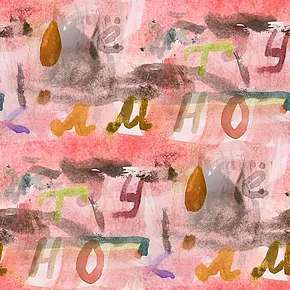Grounding – A Natural Remedy for Anxiety
Feeling ungrounded can be alarming state. When you are overwhelmed with stress, you suddenly notice you are operating on autopilot: ‘I don’t remember driving here?’ ‘What happened to the last hour/day?’ ‘Time seems to be flying by, I can’t keep up.’ In this article we describe 20 exercises that have been found to reduce symptoms of anxiety.
It is challenging to function if we are anxious and ungrounded. I feel messy in my brain, my heart races and I can feel pounding in my chest. My breathing starts to get quicker and shallow – I am stressed.

‘Ungrounded’ can mean feeling unstable and unsupported – in my body. It may be a temporary state, and for many people, it is very familiar. When you are disconnected from your feelings and oblivious to surroundings, you may be tripping over yourself and other’s feelings. Finding it hard to concentrate, a bit blurry, forgetful can increase a sense loss of confidence.
The ungrounded person often holds too rigidly onto a viewpoint or capitulates quickly to avoid conflict. You might get a bit snarly, defensive and then exit quickly. It’s a feeling of becoming anxious and overwhelmed in everyday situations.
Creating a firm footing.
What to do? Creating a firm footing and finding balance via grounding can really help in these moments.
It is not so useful to dig in, like a tree with deep solid roots. Usually we need to be able to move and at the same time feel grounded. I think of my friend who travels for work – every time she arrives at a new hotel she creates a sense of ‘home’ – placing a family picture on bedside table, cosmetics laid out in the bathroom, favourite small pillow replaces the hotel one. Notice how dogs walk a circle around the spot and then lie down, creating a instinctual protective circle.
“A grounded person feels she has a right to stand here, to be here, to be heard in her silence or her voice. A grounded person may not speak to be heard while an ungrounded person may talk endlessly without result” (Conger)
Being grounded is the prerequisite for feeling centred, whole, rather than disconnected with your world. Reduce your anxiety symptoms with grounding – a useful tool to reduce stress.
The following grounding exercises are focused on using the 5 senses (see, hear, smell, taste, touch) to build mind and body connection in the present.
Give different ones a go, try them at different times, see what suits you; you might find one or two that work for you. Whilst you experiment with the grounding exercises suggested here – please remember, only use the exercises that you feel comfortable with.
20 Grounding Tools
 ANXIETY OVERWHELMING: Tell yourself the basics: Who you are now. Say your name. Say your age now. Say where you are right now. Say what you have done today. Say what you will do next.
ANXIETY OVERWHELMING: Tell yourself the basics: Who you are now. Say your name. Say your age now. Say where you are right now. Say what you have done today. Say what you will do next.- DISCONNECTING: Splash water on your face.
- INSTABILITY: Sip a cool drink of water.
- PANIC RISING: Take ten breaths – focus your attention on each breath on the way in and on the way out. Say the breath number to yourself as you exhale.
- NIGHTMARE: As you wake, during the night, remind yourself who you are, and where you are. Tell yourself who you are and where you are. What age are you now?
- DISSOCIATIVE: Take a tennis ball or a rubber ball, standing without shoes roll your foot on the ball, pressing down, feeling the bones in your foot and your tense muscles responding to the connection with the ball. Swap feet.
- BAD DREAM : As you wake look around the room and notice familiar objects and name them. Have a special object on your bedside table, something soothing – look for this when you wake, recall why you selected this object, this grounding moment can bring you back to real time.
- STRESSED OUT: Slow down, touch the clothes on your body, notice if your arms and legs are covered or not, and feel the sensation of your clothes as you move in them.
- ANXIOUS: If you are with other people, and you feel comfortable with them, concentrate closely on what they are saying and doing, and remind yourself why you are with them.
- ANOTHER NIGHTMARE: Notice the bed you are laying on, feel the bed linen, notice the warmth or coldness of the air, and notice any sounds you hear.
- EMPTINESS: If you are sitting feel the chair under you and the weight of your body and legs pressing down onto it.
- LETHARGY: If you are lying down, feel the contact between your head, your body and your legs. Notice how they touch the surface you are lying on. Starting from your head, notice how each muscle feels, all the way down to your feet, on the soft or hard surface.
- TALKING TOO MUCH: Stop and listen. Notice and silently name what you can hear nearby and in the distance.
- SIGHS: Hold a mug of tea in both hands and feel its warmth. Don’t rush drinking it, take small sips and take your time tasting each mouthful mindfully.
- CONCENTRATION PROBLEMS: Look around and notice what is in front of you and to each side, name first large objects and then smaller ones.
- OVERWHELMED: Get up, walk around and take your time to notice each step as you take one then another.
- HOPELESSNESS: Stamp your feet notice the sensation and sound as you connect with the ground.
- IRRITABILITY: Clap and rub your hands together, hear the noise and feel the sensation in your hands and arms.
- OVERWHELMED: Try putting an elastic band on your wrist, not too tight and flick it gently, so that you feel it spring back on your wrist as it hits your skin repeat an affirmation that is useful like “nothing is wrong with me, the anxiety is causing this feeling”.
- RESTLESSNESS: If you can, step outside, notice the temperature of the air and how much it is different or similar to where you have just come from.
Supportive counselling is available to explore strategies to ease issues with anxiety, trauma or grief. You might not need a diagnosis, you may simply need to find someone who listens as you download. I have a range of strategies and resources to share. Please get in touch, I’m always happy to speak with people and hear what’s happening in your life first, before scheduling a session.
References
The Body in Recovery: Somatic Psychotherapy and the Self, John P. Conger, 1994 Frog Books.
8 Keys to Safe Trauma Recovery: Take-Charge Strategies to Empower Your Healing. Babette Rothschild. 2010. W.W. Norton, New York
By Jane Macnaught
Subscribe For More
 Jane Macnaught
Jane Macnaught
E: counsellor@tranquilloplace.com M: +61 425 152 490
Learn More About Jane
Tranquillo Place: Counselling | Mediation | Relationships
We offer private services in our beautiful tranquil room in Mona Vale, Northern Beaches Sydney and online using secure, encrypted Zoom.
Specialists in trauma, anxiety, grief & loss, communication, intimate relationships, compassionate mediation, couples coaching, online courses & training, workshops, and trauma informed practitioner support group.
Talk to us. We would like to hear what’s happening in your life and help you find the right support.
Book a Free Session
Disclaimer: Tranquillo Place makes every effort to provide readers of our website, blogs and newsletters with information which is accurate and helpful. It is not however a substitute for counselling or professional advice. While all attempts have been made to verify all information provided, Tranquillo Place cannot guarantee and does not assume any responsibility for currency, errors, omissions or contrary interpretation of the information provided.
*Please note that this blog post is for informational and educational purposes only. It is not an endorsement of the books. We have created links to the Australian owned online bookstore BOOKTOPIA, and if you purchase with these links the website owner Tranquillo Place will be paid a nominal affiliate fee. We hope you enjoy reading these books.



